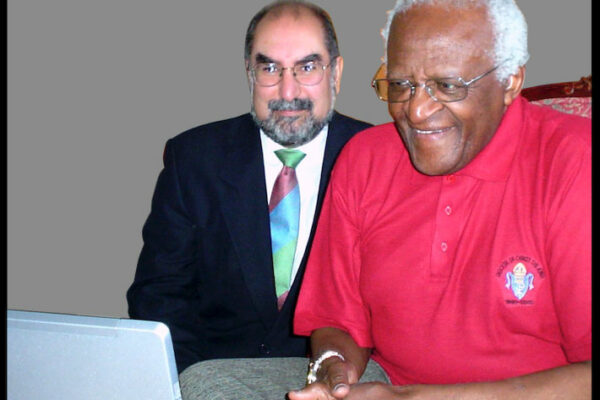Development Aid 2.0: A New Model For Funding Change

Aid is looking for a new model to bring down the fences between funding and development. mhealth could provide the key. Photo by Louis Michel, via Wikimedia.
Those who created the software of international development aid are frustrated. They spent decades building a trillion-dollar architecture only to see it lurch, stumble and fizzle into limited capacity.
During the past few years these donors have realized that they can’t fix the system’s bugs because the few real beneficiaries of aid – governments, businessmen and warlords on both sides of the economic divide – don’t want them fixed. So do they throw away the program and start again from scratch or develop a different algorithm to create Aid 2.0?
Evidence of a new algorithm is everywhere, and it’s been influenced by some pretty disparate sources.
Amartya Sen was the first to analyze the problem, for which he won the 1998 Nobel Prize in Economics, and then put it into book form with Development as Freedom. Others like Dambisa Moyo have coldly picked apart the old neo-liberal model, but it took a few billion dollars of philanthropic entrepreneurialism from the Bill and Melinda Gates Foundation to provide the seed capital for change. Today the rule in development aid, however problematic on the ground, seems to be “No more blindfolded handouts.”
It is impossible to judge the efficacy of something that is just starting to morph, but if you want a glimpse into where Aid 2.0 is heading, watch the mhealth Summit about to get under way next week in Washington.
Health-care delivery through mobile technology is a frontier. It has the potential to improve health immeasurably around the world and save billions, perhaps even trillions, of dollars in medical costs. It also promises to make billions of dollars in profits for those who develop its intellectual property, which is why the conference’s list of sponsors is a who’s who of the corporate world. And yes, there is a very real possibility of an mhealth market bubble as potential grows.
The three-day Washington event is mostly about innovations and opportunities developed for rich patients and clients. Yet scattered throughout the sessions on commercializing technology and gaming for disease prevention is a Global Health stream dealing with health-care realities in countries with few resources, remote locations, basic management and minimal training.
The main focus in these international sessions will be about improving care using cell phones. For every 10,000 people in the developing world there are about 8,300 cell phones, yet only 14 doctors. mhealth’s purpose is to create an algorithm that weights these numbers equally.
How this content is presented to attendees is the preview for Aid 2.0.
Forty six people will give presentations about the global situation. In virtually each of their biographies is an emphasis on creating solutions through market forces and on expertise in public-private partnerships (P3). Most get some funding from the Gates’ foundation. Among them are only three fully fledged government bureaucrats (United States, Kenya and Nepal); one official from the World Health Organization and no one from the United Nations or World Bank.
This private-sector emphasis probably isn’t by design, but it does tell you who the important players now are in creating the future of aid. This isn’t a bad thing, especially in a spawning industry.
Presentations will cover topics like enabling environments, capacity development, technology, funding, maternal and pediatric care and innovations specifically for the developing world. mhealth is a virtual blank slate in these places; it almost doesn’t matter how engagement happens, so long as it does. Maximizing profit in a philanthropic industry, however, is another question.
There are bright glimmers of progressiveness among the conference’s speakers: iheed’s Tom O’Callghan will explain how his non-profit is trying to deliver training to a million new health-care workers in Africa via cell-phone-accessed animation (Chocolate Moose Media’s Firdaus Kharas is creative director for the project); Eric Woods’ Switchboard is providing free telephone calls for doctors in Ghana and Liberia with a plan to extend the system throughout Africa; and Deborah Van Dyke from the Global Health Media Project produces behaviour-change media like the animated film The Story of Cholera, in Sierra Leone, which has earned many awards.
But the writing in on the wall for the future of doing good. Whether we agree with them or not, those who collect money and distribute it as the gatekeepers of development aid have decided that their jobs must now be driven by results as well as motives. This is why mhealth can be the canary in the aid coal mine.
It is unencumbered by five decades of good intentions and disappointing metrics. It has never succumbed to inadequate infrastructure, bureaucratic and private-sector corruption or dysfunctional stakeholders. It is an industry that can grow in lockstep with similar sectors in the industrialized world, sharing and collaborating on delivery, innovations and funding models.
If Aid 2.0 is to prove that development can happen equitably anywhere in the world, on individual terms and without pity, it needs a practice to support the theory. The high-tech version of health care appears at the head of the line.






